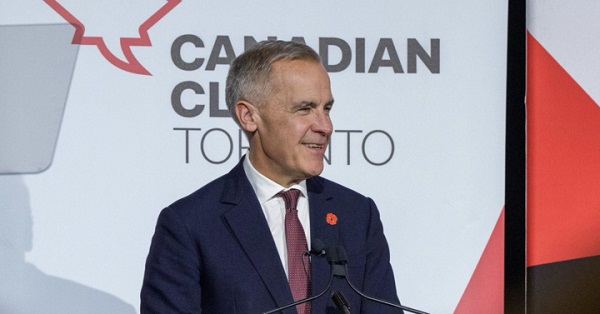Energy
European Outage Shows Weakness Of ‘Renewable’ Energy


From the Daily Caller News Foundation
By Chris Talgo
Like most of Western Europe, Spain and Portugal have been at the forefront of the green movement in recent decades. Both nations have embraced renewable energy sources, especially wind and solar, as they have transformed their energy grid infrastructure to rely heavily upon these sources.
With that being said, it should come as no surprise that the extensive power outage that crippled these countries and parts of others earlier this week was primarily caused by a huge drop in solar power output in a short period of time.
To be exact, as the Associated Press reports, “In a span of just five minutes, between 12:30 and 12:35 p.m. local time (1030-1035 GMT) on Monday, solar PV generation plunged by more than 50% to 8 gigawatts (GW) from more than 18 GW.”
Based on an early report, the sudden drop in solar power occurred at two solar facilities in southwest Spain, which triggered a “complete collapse of the system,” according to Spanish Prime Minister Pedro Sánchez.
Because power grids are complex structures that are often intertwined among nations, when one country experiences a major outage, it typically spreads to its neighbors as well. Such is why areas in Portugal, France, and Belgium experienced large power outages after the Spanish grid collapsed.
Predictably, the mainstream media are totally ignoring the cause of this manmade disaster.
For now, the official narrative is that the abrupt power outage was due to a “rare atmospheric phenomenon.”
The truth is that Spain, which generated 56 percent of its electricity mix in 2024 from renewables, has become a canary in the coal mine for other nations that are considering going all-in on renewable energy.
Red Electrica, a fitting name for Spain’s monopolistic utility power provider, blamed the power failure on “severe oscillations in high-voltage lines in southern France or inland Spain.” The company said the possible causes “include a physical fault (line disconnection), a sudden loss of generation within Spain or an atmospheric phenomenon.”
What recently occurred in Spain, Portugal, France, and Belgium is not an isolated incident; it is only the latest instance of an electric grid being unable to deliver on-demand power due to an overreliance on renewable energy.
The same thing’s been occurring more and more in the United States in recent years, especially after President Biden’s four-year war on natural gas and coal, which can provide abundant, affordable, and reliable energy 24 hours per days, seven days per week.
As the federal government, in cahoots with state and local governments, has pushed electricity grid operators to build more solar and wind power facilities instead of dependable natural gas plants while prematurely shuttering perfectly operable coal power plants, the U.S. grid has suffered.
As the American Energy Alliance notes, “ power outages have increased by 93 percent across the United States over the last 5 years—a time when solar and wind power have increased by 60 percent. Texas, who leads the nation in wind generation, and California, who leads the nation in solar generation, have had the largest number of power outages in the nation over those 5 years.”
It also must be emphasized that wind and solar are not environmentally friendly.
While it is true that solar panels and wind turbines produce little to no direct carbon monoxide emissions; it is also true that the manufacturing process requires vast amounts of rare earth elements.
It is also the case, as even the Los Angeles Times acknowledged in 2022, that enormous solar fields and gigantic wind turbines destroy pristine lands, disrupt habitats, are nearly impossible to recycle, and result in the mass killing of birds, whales, and other animals.
Finally, it is essential to reinforce the fact that not only are wind and solar unreliable and bad for the environment, but they also cost more, not less, than natural gas and coal.
As James Taylor, President of The Heartland Institute, notes in a new Policy Study, “a peer-reviewed analysis of full-system levelized costs of competing power sources shows wind power is seven times more expensive than natural gas power and solar power is 10 times more expensive.”
The good news for Americans is that President Trump understands the fundamental folly of the so-called green movement. Unlike his predecessor, Trump is not interested in pushing what he calls the “green new scam.”
Over his first 100 days, Trump has taken a vast array of actions to roll back Biden-era regulations that stifled domestic energy production. Moreover, Trump wants to export natural gas to Western Europe, which would weaken Russia’s war machine while bringing our traditional European allies back in the fold.
Hopefully, this dark episode will help other European nations, Germany in particular, recognize that you simply cannot run a modern nation primarily on wind and solar power.
Chris Talgo is editorial director at The Heartland Institute.
Business
Carney doubles down on NET ZERO

If you only listened to the mainstream media, you would think Justin Trudeau’s carbon tax is long gone. But the Liberal government’s latest budget actually doubled down on the industrial carbon tax.
While the consumer carbon tax may be paused, the industrial carbon tax punishes industry for “emitting” pollution. It’s only a matter of time before companies either pass the cost of the carbon tax to consumers or move to a country without a carbon tax.
Dan McTeague explains how Prime Minister Carney is doubling down on net zero scams.
Artificial Intelligence
AI Faces Energy Problem With Only One Solution, Oil and Gas


From the Daily Caller News Foundation
Which came first, the chicken or the egg? It’s one of the grand conundrums of history, and it is one that is impacting the rapidly expanding AI datacenter industry related to feeding its voracious electricity needs.
Which comes first, the datacenters or the electricity required to make them go? Without the power, nothing works. It must exist first, or the datacenter won’t go. Without the datacenter, the AI tech doesn’t go, either.
Logic would dictate that datacenter developers who plan to source their power needs with proprietary generation would build it first, before the datacenter is completed. But logic is never simple when billions in capital investment is at risk, along with the need to generate profits as quickly as possible.
Dear Readers:
As a nonprofit, we are dependent on the generosity of our readers.
Please consider making a small donation of any amount here.
Thank you!
Building a power plant is a multi-year project, which itself involves heavy capital investment, and few developers have years to wait. The competition with China to win the race to become the global standard setters in the AI realm is happening now, not in 2027, when a new natural gas plant might be ready to go, or in 2035, the soonest you can reasonably hope to have a new nuclear plant in operation.
Some developers still virtue signal about wind and solar, but the industry’s 99.999% uptime requirement renders them impractical for this role. Besides, with the IRA subsidies on their way out, the economics no longer work.
So, if the datacenter is the chicken in this analogy and the electricity is the egg, real-world considerations dictate that, in most cases, the chicken must come first. That currently leaves many datacenter developers little choice but to force their big demand loads onto the local grid, often straining available capacity and causing utility rates to rise for all customers in the process.
This reality created a ready-made political issue that was exploited by Democrats in the recent Virginia and New Jersey elections, as they laid all the blame on their party’s favorite bogeyman, President Donald Trump. Never mind that this dynamic began long before Jan. 20, when Joe Biden’s autopen was still in charge: This isn’t about the pesky details, but about politics.
In New Jersey, Democrat winner Mikie Sherrill exploited the demonization tactic, telling voters she plans to declare a state of emergency on utility costs and freeze consumers’ utility rates upon being sworn into office. What happens after that wasn’t specified, but it made a good siren song to voters struggling to pay their utility bills each month while still making ends meet.
In her Virginia campaign, Democrat gubernatorial winner Abigail Spanberger attracted votes with a promise to force datacenter developers to “pay their own way and their fair share” of the rising costs of electricity in her state. How she would make that happen is anyone’s guess and really didn’t matter: It was the tactic that counted, and big tech makes for almost as good a bogeyman as Trump or oil companies.
For the Big Tech developers, this is one of the reputational prices they must pay for putting the chicken before the egg. On the positive side, though, this reality is creating big opportunity in other states like Texas. There, big oil companies Chevron and ExxonMobil are both in talks with hyperscalers to help meet their electricity needs.
Chevron has plans to build a massive power generation facility that would exploit its own Permian Basin natural gas production to provide as much as 2.5 gigawatts of power to regional datacenters. CEO Mike Wirth says his team expects to make a final investment decision early next year with a target to have the first plant up and running by the end of 2027.
ExxonMobil CEO Darren Woods recently detailed his company’s plans to leverage its expertise in the realm of carbon capture and storage to help developers lower their emissions profiles when sourcing their needs via natural gas generation.
“We secured locations. We’ve got the existing infrastructure, certainly have the know-how in terms of the technology of capturing, transporting and storing [carbon dioxide],” Woods told investors.
It’s an opportunity-rich environment in which companies must strive to find ways to put the eggs before the chickens before ambitious politicians insert themselves into the process. As the recent elections showed, the time remaining to get that done is growing short.
David Blackmon is an energy writer and consultant based in Texas. He spent 40 years in the oil and gas business, where he specialized in public policy and communications.
-

 Crime1 day ago
Crime1 day agoCBSA Bust Uncovers Mexican Cartel Network in Montreal High-Rise, Moving Hundreds Across Canada-U.S. Border
-

 Environment1 day ago
Environment1 day agoThe Myths We’re Told About Climate Change | Michael Shellenberger
-

 Energy2 days ago
Energy2 days agoIt should not take a crisis for Canada to develop the resources that make people and communities thrive.
-

 Dr John Campbell2 days ago
Dr John Campbell2 days agoCures for Cancer? A new study shows incredible results from cheap generic drug Fenbendazole
-

 Artificial Intelligence1 day ago
Artificial Intelligence1 day agoAI Faces Energy Problem With Only One Solution, Oil and Gas
-

 Health1 day ago
Health1 day agoLack of adequate health care pushing Canadians toward assisted suicide
-

 Alberta19 hours ago
Alberta19 hours agoATA Collect $72 Million in Dues But Couldn’t Pay Striking Teachers a Dime
-

 Media18 hours ago
Media18 hours agoBreaking News: the public actually expects journalists to determine the truth of statements they report








